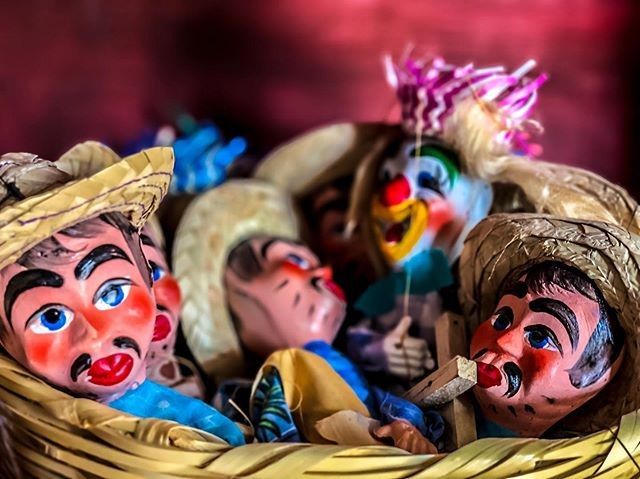Títeres or Mexican puppets, an ancestral tradition of Mexico
The Hermanos Rosete Aranda left a great cultural legacy in Huamantla, Tlaxcala, a museum that is now part of the most prestigious in puppetry

Puppets are part of the ancestral history of the municipality of Huamantla. The magical town of the state of Tlaxcala preserves this pre-Hispanic tradition thanks to the National Puppet Museum and the International Puppet Festival "Rosete Aranda," one of the most prestigious in the world, where some of their puppets are already part of the Mexican cultural heritage as El vale coyote, La parrasconcita or El pilluelo dinamita.
"The tradition of puppets has marked the history of our country for hundreds of years. Clay figurines have been found in archaeological sites of Tlaxcala such as Cacaxtla and Xochitécatl, which imitate articulated human beings. The children of the high social classes already had these toys in pre-Hispanic times," says Julio García Castillo de rehiletes.com, a specialist in cultural tourism in Tlaxcala. There is even a Mayan codex that reveals the character Teokikixltli (the one who makes the gods dance), who on one hand shows a gloved puppet and on the other a threaded puppet.
Alberto Beto Orozco García's family has kept this Mexican historical tradition alive with dedication, passion, and inexhaustible love for puppets. Three generations at the service of this art that Beto, 34 years old, began to learn at the age of 8. From the construction of his own puppets to the arrangement of the works and stages to their handling, Beto and his four siblings - and now his nephew - keep the tradition alive. His mother, Aída García Hernández, makes the costumes for the puppets.
"It's a family tradition that I follow because I've known it since I was born. Everyone at home is a musician, a puppeteer; my older brother is an opera singer, my mother sews the costumes," explains Beto. If anyone can give life to acrobats, a tequila skeleton, a sad tenor, or a puppeteer in pain, it's Beto, with magical hands that move the puppets in such a way that they magnetize the audience.
Beto has directed the puppet theatre group La Bruja, based in Huamantla, Tlaxcala, since 2005. Most of its members belonged to the group Malitzin (National Puppet Museum) from 1993 to 2002. La Bruja is made up of musicians, dancers, teachers, administrators, painters, and singers. Its main objective is to preserve and spread puppetry art in Mexico.
Rosete Aranda Family
In 1835 the automaton company of the Rosete Aranda Brothers was created, the most important puppet company in Mexico and known worldwide, whose influence has reached Russia, wherein one of its universities there is a theatrical subject called Rosete Aranda.
The name puppet is an onomatopoeic word that the actors made with a whistle producing a ti-ti while moving the dolls. Here comes the ti-ti-ritero!
The Huamantla Museum preserves the collection of the Rosete Aranda Brothers. This establishment also houses an extensive collection of puppets from Germany, France, Italy, Indonesia, China, South America, the United States, and Mexico thanks to the donations of many of the international puppet companies that participate in the International Puppet Festival that takes place during the last two weeks of October.
Puppet techniques
Within the puppet theatre, there are different techniques: threads, gloves, rod, shadow, mouths, ventriloquists, blackjack, shooting. A puppet can be manipulated in so many ways that the expression has already passed to popular culture under the saying: "they manipulate you like a puppet".
The Huamantla Puppet Museum is not only an exhibition but a journey through the history of Mexico. Here you can see how Friar Simeon evangelized by moving the puppets with the threads of a cross of Christ. The puppets also preserved unwritten stories with shows such as that of Don Ferruco and Doña Mariquita who, in addition to being great artists, were masters who went deep into the mountains to alphabetize an entire generation through the puppets.
Some puppets were so relevant that they later went on to television as La Familia Telerín, which was first a group of Mexican puppets. The name guiñol also comes from the history of Mexico: it was a character who during the French intervention encouraged Mexican soldiers to fight. Monsieur Guignol and his doll were all characters of the time.




